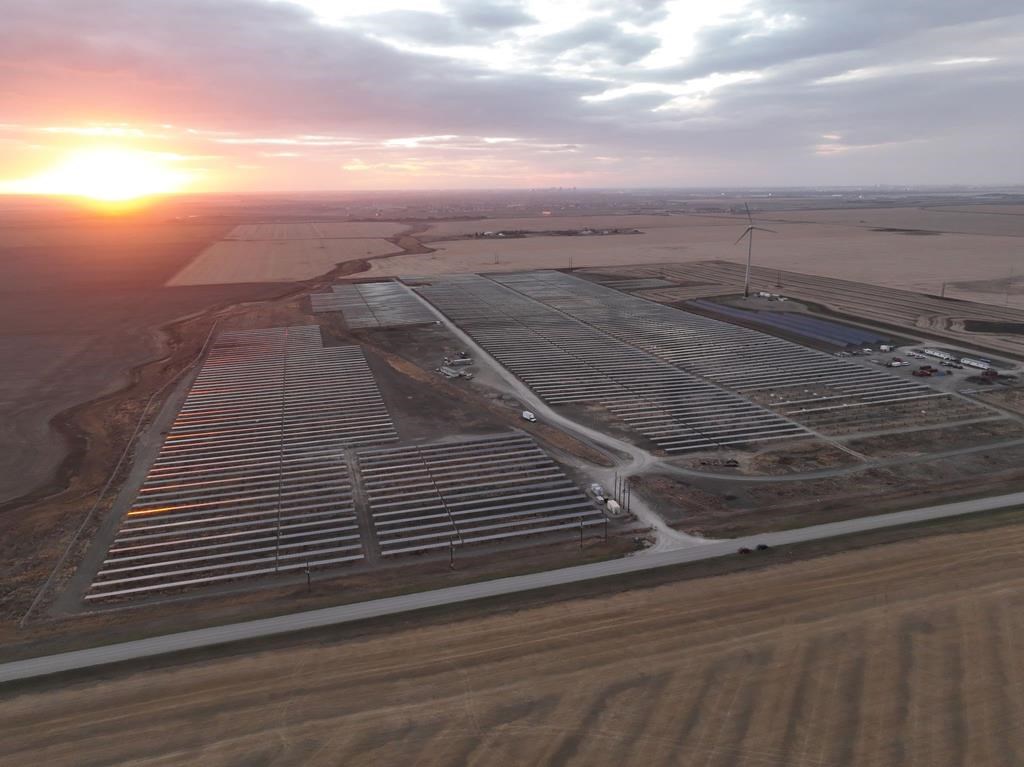First Nations and Métis communities are playing a big role in helping Saskatchewan develop green energy solutions. Renewable energy sources to provide electricity have been a main focus as Saskatchewan attempts to reach net-zero emissions by 2050.

As the province works to put its best foot forward, some First Nations across the province are also getting a leg up on green energy solutions.
Cowessess First Nation developed Canada’s first solar and wind hybrid system in 2022, which can provide electricity to 10,000 homes.
Former chief of Cowessess First Nation Cadmus Delorme played a big role in turning the system into what it is today. He said part of the success comes from the partnership built between the province and Indigenous communities.

Get breaking National news
“Sask. Power makes it easy for First Nations to participate in renewable energy projects because of the purchase power agreement where you have to have an Indigenous partner,” Delorme said. “It brings First Nations and Métis to the table, which is a good thing in this province economically.”
The work continues as Cowessess First Nation also has a hand in a 200-megawatt wind farm being built near Kipling, Sask.
Construction on the farm started in 2023 and Kipling will be making announcements in November on when it’ll begin operating.
“You’re never going to have a 100 per cent renewable energy that’s realistic but we can reduce the other means and add in more into the grid and First Nations and Métis communities are spread out across this province and so we can definitely make this normal in every area of our province,” Delorme said.
While the province progresses, Saskatchewan is considering nuclear energy — specifically through small modular reactors (SMRs), which could provide electricity across the province.
“It’s going to be on 24-7 all year so that you’re not looking at intermittency with changes in weather so that ends up being very useful for a grid when it comes to steady power,” University of Regina SMR professor Arthur Situm said.
“Part of the attractive thing about SMRs is that it can use the existing grid so it’s essentially a one-for-one swap out of the existing coal plants.”
Saskatchewan will make the decision on whether or not to move forward with SMRs in 2029.








Comments